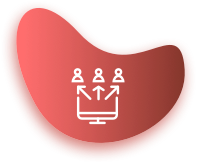With support data marketing can harvest meaningful value about current customers and create more robust campaigns.
Improving how you market your product can make a significant difference to your business’ success. Marketers need to take input from multiple sources to determine what is important to the marketplace and how to capture the attention of the addressable market. One of the key ways to do this is by aggregating ‘Voice of Customer’ feedback.
Voice of Customer feedback is defined as the needs and demands of your product received from your prospects and current customers. It encompasses all aspects of your customer journey and is captured in your customers’ words. Using this data effectively can significantly alter the strategy with which you go to market.
Collecting this feedback is often easy: Just ask for it. Most customers want to give feedback. It is in their best interest to do so since, in theory, it should improve the value they get from your product. So, who and when do you ask?
The good news is, you have a team already doing it for you. Almost every interaction with your Support team comes with some helpful information or feedback.
As Manager of Client Support at Bonfire, we’ve built a partnership with our marketing team to help promote support through marketing material and sales pitch decks while making customer data from surveys and tickets wholly available to shape their campaigns.
I want to share the few small collaborations we’ve done so you can maximize your reach into your customer base and give your marketing strategy a boost!
 Support Data is Marketing Data
Support Data is Marketing Data
“The aim of marketing is to know and understand the customer so well the product or service fits him and sells itself.” – Peter Drucker
Everyday customers reach out to your Support team to talk about the problems they are trying to solve with your product. Marketing can capitalize on this information by working with Support to structure the metadata captured during those conversations.
By using a multi-function Customer Relationship Management tool such as Salesforce you can immediately correlate support ticket specifics with the clients submitting it. The value in this is how you slice the data. For example, splitting the data by market vertical or customer size could give you 2 more targeted and meaningful marketing campaigns to execute on.
Using tags or fields within the tool, you can tell which product areas are more heavily utilized. Insight to your customer pain-points, what they are saying, and what they are struggling with should be echoed in your messaging.
If your customers are trying to solve specific problems, your prospects most certainly are as well. Using this information in go-to-market strategies displays that you understand what your prospects care about and how your product is a good fit for them.
Support also can use this data to help you determine appropriate reference accounts for prospects that are solving similar problems.
Do you want a list of customers that use a particular feature to leave a positive review on sites such as G2 Crowd? As opposed to reusing an inevitably outdated list of reference accounts, Support can help you find customers whom they’ve recently helped succeed.
By working with support, marketing can harvest meaningful value about current customers and create more robust campaigns.
 Support as a Differentiator
Support as a Differentiator
“Customer service is the new marketing” – Derek Sivers
Your Support team should be marketed as a differentiator against your competitors. Since customer experiences make up a significant part of buying decisions, a customer-centric marketing strategy needs to include Support metrics. Providing help when needed leads to happy customers, so when surveying customers, always ask about their experiences. Doing so can help you fix the bad, and advertise the good!
At Bonfire, we pride ourselves on maintaining industry-leading first response and resolution times through multi-channel support. We continually work to improve our Net Promoter Score (NPS) and Customer Satisfaction (CSAT) through new and innovative support techniques.
Our customers trust us to handle any problem they may have without channel switching or added effort.
Marketing for a company that has a lot of dissatisfied customers with a need to change the prevailing market sentiment takes resources and energy. Happy customers and a high Net Promoter Score make the job easier.
Why wouldn’t you want to show that off?
 Survey Responses as Actionable Feedback
Survey Responses as Actionable Feedback
“Knowing is not enough! You must take action.” – Tony Robbins
Some of the best insights from customer surveys come in the form of written feedback. The value for the customer is not in providing their comments; it is the resulting actions.
Asking someone to fill out a survey where no tangible results are delivered doesn’t give much incentive for them to do so. Moreover, we’ve all been promised an opportunity to win a $100 gift card, or new tech gadget too many times without success.
Use the survey as an opportunity to understand your customers and engage with them. Market the survey itself as an opportunity to provide candid comments on any aspect of the customer journey.
Benefit questions
Ask questions that benefit you and the customer:
- How was the sales process?
- How was your onboarding?
- Have you ever contacted support?
- What do you like least about the product?
If that knowledge is only in a marketing-specific system, a valuable opportunity to further engage with your customers could be a missing thing in your process. Having a shared tool to collect that feedback allows you to deliver insights to all teams. What may appear meaningless to marketing eyes can lead to valuable insights from a support perspective and vice-versa.
Support’s role already includes the ability to recognize case types and feed them to the right teams. Use that skill to your advantage to maximize positive customer outcomes, while gaining your value in return.
Survey actions
Actions from a survey could take the form of a:
- product change request
- training issue
- support ticket
- upsell potential
If direct, impactful actions are observed to come from the given feedback, they will be more likely to provide more in the future. At the same time, you can use the responses to create marketing materials to drive new business. It’s a win-win!
Conclusion
To be successful, it is a necessity that you maximize your customer knowledge.
Connecting Support data with Marketing surveys is an excellent way to build more robust buyer personas. Using those personas, you will enhance your go-to-market strategy and help you to tailor messaging to better-fit prospects.
Always remember that measuring is not a one-off activity. Surveying and performing analysis on a regular cadence is an opportunity to catch trends and quickly adjust to a changing market direction and demands.
Getting Voice of Customer feedback is typically easy; Support does this every day. Harnessing the information, and combining it with your survey strategy to ultimately making market-based, data-driven insights to accelerate increase revenue and drive your business forward.








